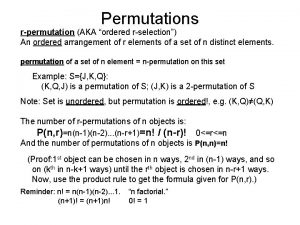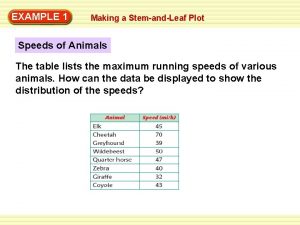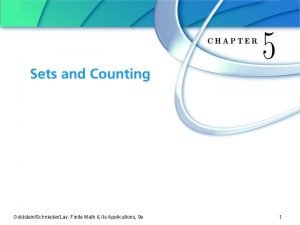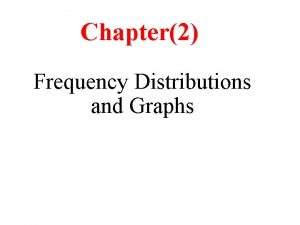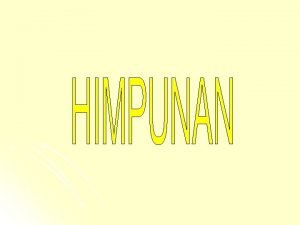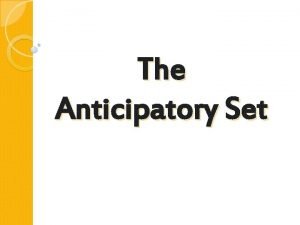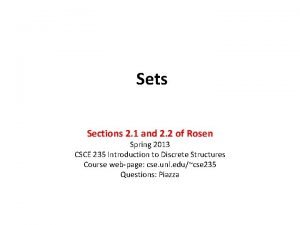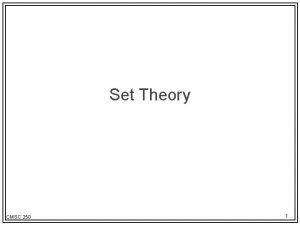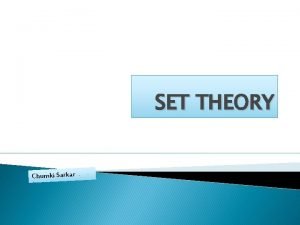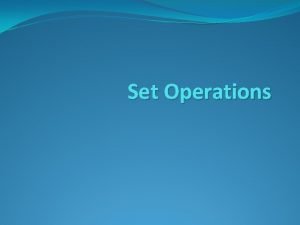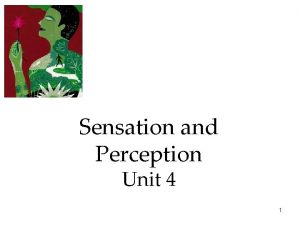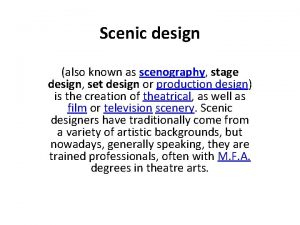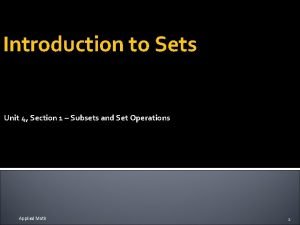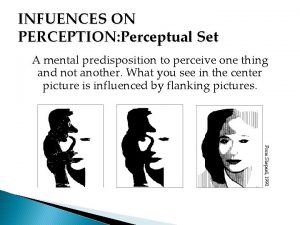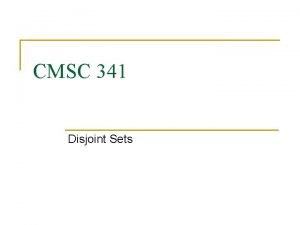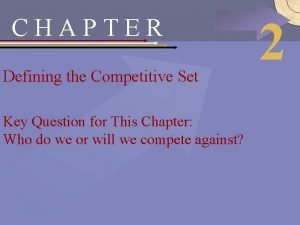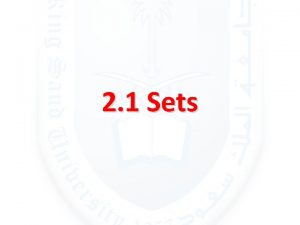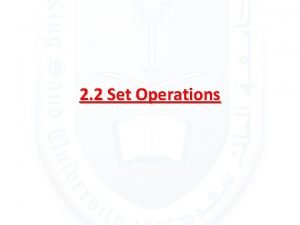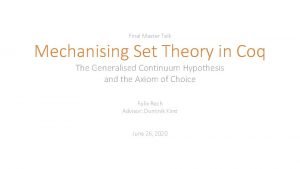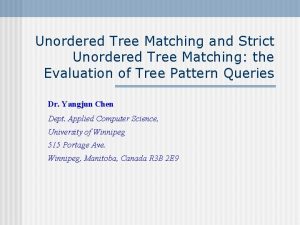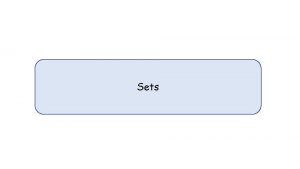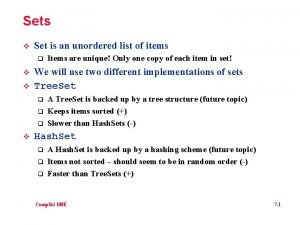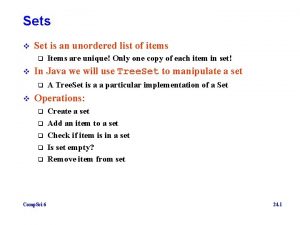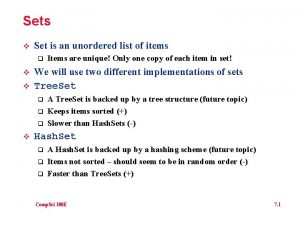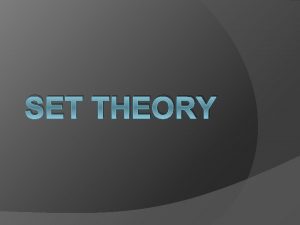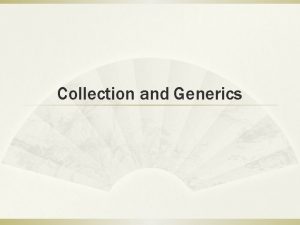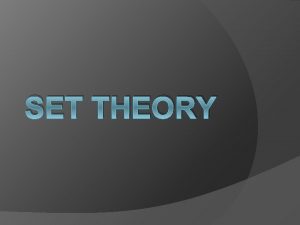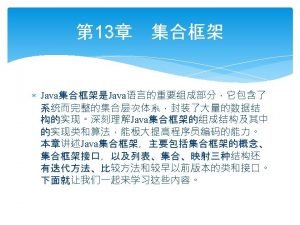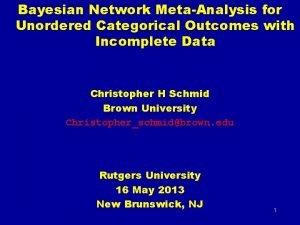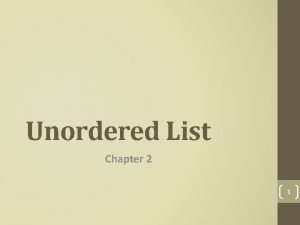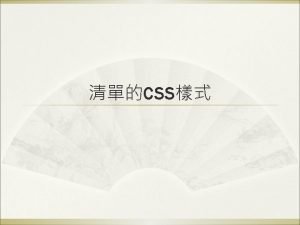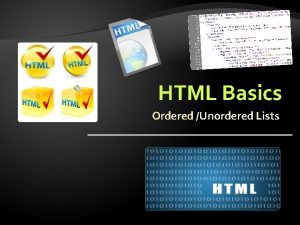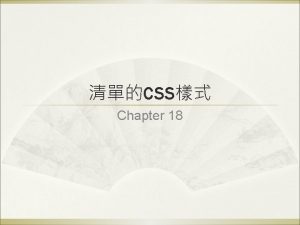Set Definition A set is unordered collection of






































- Slides: 38

Set Definition: A set is unordered collection of objects. The objects in a set are called the elements, or members, of the set. A set is said to contain its elements. A = { a, b, c, d } B = { 1, 2, 3 } Notation: a is an element of the set: a A f is not an element of the set: f A

Describing a Set (1) {…} V is a set of all vowel in alphabet: {a, e, i, o, u} O is a set of odd positive integers less than 10: {1, 3, 5, 7, 9} P is a set of positive integer less than 100: {1, 2, 3, …, 99} D is a set of personal data: {Joko, student, UMN} unrelated elements

Describing a Set (2) Set Builder O is a set of odd positive integers less than 10: O = {x | x is an odd positive integer less than 10} OR O = {x Z+ | x is odd and x < 10} Z+ is the set of all positive integers

Set Builder: Describe the following sets {0, 3, 6, 9, 12} {-3, -2, -1, 0, 1, 2, 3} {m, n, o, p} {1, 2, 4, 8, 16}

Describing a Set: Common Notations Z = {…, -2, -1, 0, 1, 2, …} , the set of integers. Z+ = {1, 2, 3, …} , the set of positive integers. (N = {1, 2, 3, …} , the set of natural numbers) Znonneg ={0} Z+ = {0, 1, 2, 3, …} , the set of nonnegative integers. Q = {p/q | p Z, q Z, and q ≠ 0} , the set of rational numbers}. Q+ is the set of all positive rational numbers. Q+ = {x R | x = p/q, for some positive integers p and q}. R = the set of real numbers, consisting of all point in a straight line.

Describing a Set (3) Venn Diagram Rectangle: the universal set U Circle : sets, e. g. V U • a • o • e V • i • u

Equality Definition: Two sets are equal if and only if they have the same elements. That is, if A and B are sets then A and B are equal if and only if For every x, if x A, then x B For every x, if x B, then x A A=B Examples: A = {1, 3, 5} B = {5, 1, 3} C = {1, 1, 3, 3, 5} A = B ? Yes B = C ? Yes

Equality A = { X | X 2 + X – 6 = 0 } B = { 2, 3 } A=B? No A≠B A = { X | X 2 + 5 X + 6 = 0 } B = { -2, -3 } A=B? Yes

Empty Set & Singleton Definition: Empty set or null set is a set that has no elements. Notation: , { } Ex. The set of all positive integers that are greater than their squares. Singleton set is a set with one element. Ex. the set of positive odd integers less than 3: {1}

Subset Definition: The set A is said to be a subset of B if and only if every element of A is also an element of B. Notation: A B Means: for every x, if x A then x B U A B

Subset: Theorem (i) S (ii) S S Proof: Show that: for every x, if x then x S) Because the empty set contains no elements, it follows that x is always false. It means that x x S is always true (you will learn the truth table for conditional statements in next week’s lecture)

Proper Subset Definition: The set A is a subset of B but A ≠ B Notation: A B Means: A is a subset of B and A does not equal B Note : proper subset pasti subset tetapi subset belum tentu proper subset.

Subset: Examples Give examples of: A B and B C

Equality of two sets Definition: IF A B and B A THEN A = B Example: A= { , {a}, {b}, {a, b}} B = {x | x is a subset of the set {a, b}} A=B

Finite Set and Cardinality Definition: Let S be a set. If there are exactly n distinct elements in S where n is a nonnegative integer, we say that S is a finite set and that n is the cardinality of S. Notation: |S| A is a set of odd positive integers less than 10. |A| = 5 S is a set of letters in alphabet. |S| = 26 B = {1, 1, 3, 5, 7} |B|=4

Infinite Set Definition: A set S is said to be infinite if it is not finite. Example: the set of positive integers.

Power Set Definition: Given a set S, the power set of S is the set of all subsets of the set S. Notation: P(S) What is the power set of the set {0, 1, 2}? P({0, 1, 2}) = { , {0}, {1}, {2}, {0, 1}, {0, 2}, {1, 2}, {0, 1, 2}}

Cardinality of Power Set |S| = 3 |P(S)| = 23 = 8

Set Operations (Operasi-operasi pada Himpunan)

Union Definition: Let A and B be sets. The union of the sets A and B, denoted by A B, is the set that contains those elements that are either in A or in B, or in both. Notation: A B = {x | x A or x B}

Union: Example A = {1, 3, 5} B = {1, 2, 3} A B = {1, 2, 3, 5}

Intersection Definition: Let A and B be sets. The intersection of the sets A and B, denoted by A B, is the set containing those elements in both A and B Notation: A B = {x | x A and x B}

Intersection: Example A = {1, 3, 5} B = {1, 2, 3} A B = {1, 3}

Difference Definition: Let A and B be sets. The difference of A and B, denoted by A – B, is the set containing those elements that are in A but not in B. it is also called the complement of B with respect to A. Notation: A – B = {x | x A and x B}

Difference: Example A = {1, 3, 5} B = {1, 2, 3} A–B={5} B–A={2} In general : A – B ≠ B – A

Disjoint Definition: Two sets are called disjoint if their intersection is the empty set. Notation: A B= A = {1, 3, 5} B = {2, 4, 6} A B=

Cardinality of Union Definition: The cardinality of a union of two finite sets A and B is | A B | Notation: |A B|=|A|+|B|-|A B|

Complement Definition: Let U be the universal set. The complement of the set A, denoted by Ā, is the complement of A with respect to U or U – A. Notation: Ā = U – A ={x | x A}

Example A = {a, e, i, o, u} U – A = all other alphabets Let A be the set of positive integers greater than 10. U is the set of all positive integers. U – A = { 1, 2, 3, …, 10}

Example A group of 165 students. 8 are taking calculus, computer science and psychology 33 are taking calculus, computer science 20 are taking calculus and psychology 24 are taking computer science and psychology 79 are taking calculus 83 are taking psychology 72 are taking computer science

Example A group of 165 students. 8 are taking calculus, computer science and psychology 25(33 -8) are only taking calculus, computer science 12(20 -8) are only taking calculus and psychology 16(24 -8) are only taking computer science and psychology 34(79 -25 -12 -8) are only taking calculus 47(83 -12 -16 -8) are only taking psychology 23(72 -25 -16 -8) are only taking computer science

Set Identities Table

Ordered n-tuple Definition: The ordered n-tuple (a 1, a 2, …, an) is the ordered collection that has a 1 as its first element, a 2 as its second element, …, and an as its nth element. Two ordered n-tuples are equal if and only if each corresponding pair of their elements is equal. (a 1, a 2, …, an) = (b 1, b 2, …, bn) if and only if ai=bi

Cartesian Products Definition: Let A and B be sets. The Cartesian product of A and B, denoted by A B, is the set of all ordered pairs (a, b), where a A and b B. Notation: A B = {(a, b) | a A b B}

Cartesian Products: Example A = {0, 1} B = {1, 2} C = {0, 1, 2} A B C=? {(0, 1, 0), (0, 1, 1), …, (1, 2, 2)} Students Courses |Students| = m |Courses| = n |Students Courses| = ?

Exercises Show that: A (B C) = (C B) A A (A B) = A Venn Diagram: A (B – C) (A B) (A C)

Latihan Soal & Pembagian Kelompok

Akhir Kuliah Minggu 1 Terima kasih atas perhatiannya!
 Power set
Power set Python find pairs in list
Python find pairs in list Unordered tetrad analysis
Unordered tetrad analysis Permutation arrangement
Permutation arrangement Unordered stem and leaf plot
Unordered stem and leaf plot Sets and counting finite math
Sets and counting finite math Categorical frequency distribution example
Categorical frequency distribution example Total set awareness set consideration set
Total set awareness set consideration set Training set validation set test set
Training set validation set test set Landsat collection 1 vs collection 2
Landsat collection 1 vs collection 2 Documentary collection vs documentary credit
Documentary collection vs documentary credit Himpunan adalah
Himpunan adalah Well defined set example
Well defined set example Bounded set vs centered set
Bounded set vs centered set Fuzzy logic
Fuzzy logic Crisp set vs fuzzy set
Crisp set vs fuzzy set Crisp set vs fuzzy set
Crisp set vs fuzzy set What is the overlap of data set 1 and data set 2?
What is the overlap of data set 1 and data set 2? The function from set a to set b is
The function from set a to set b is Bruner and minturn 1955
Bruner and minturn 1955 Definition of anticipatory set
Definition of anticipatory set What is the cartesian product
What is the cartesian product Cmsc250
Cmsc250 Definition of singleton set
Definition of singleton set Complement of a set definition
Complement of a set definition Perceptual set psychology definition
Perceptual set psychology definition Unit set design
Unit set design Phi phenomenon psychology definition
Phi phenomenon psychology definition Subsets definition
Subsets definition Perceptual set
Perceptual set Disjoint sets definition
Disjoint sets definition Competitive set example
Competitive set example Definition of power set
Definition of power set Set union definition
Set union definition Set point definition
Set point definition Universal set
Universal set Empty set definition
Empty set definition What is harvest
What is harvest A website is a collection of *
A website is a collection of *



